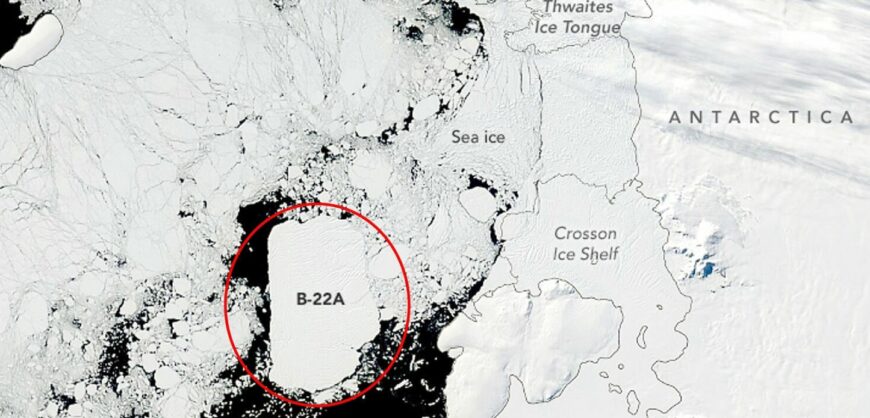An enormous iceberg that first broke off Antarctica’s “Doomsday Glacier” more than 20 years ago is finally waving goodbye to the icy continent after being freed from the seafloor, which had trapped the ice chunk in place for over a decade.
The long-lived berg, known as B-22A, is the largest remaining piece of B-22, a colossal icy mass the size of Rhode Island that snapped off Thwaites Glacier — also known as the Doomsday Glacier — in March 2002. During this time, B-22A has retained a lot of its original ice and covers around 1,160 square miles (3,000 square kilometers), which is around twice the size of Houston, Texas.
After breaking free from the glacier in the early aughts, B-22A floated freely just off the Antarctic coast until it got caught on a raised section of the seafloor in 2012. The berg became stuck around 32 miles (53 kilometers) from where it was birthed, meaning it averaged a pitiful 1.6 miles (2.6 km) of movement per year, which is one of the slowest average crawls of any iceberg on record, according to NASA(opens in new tab).
source livescience.com
(Image credit: NASA/MODIS/Terra satellite)
also read




































